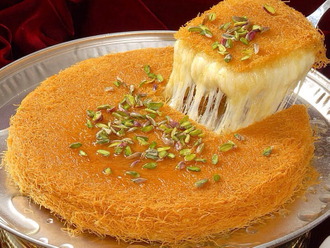Dubai: Traffic signal sequencing can play a vital role in combating speeding and a balance between a signal-equipped and a free-flowing road is key to road safety, said a Dubai-based road safety campaigner.
The flip side of a too freely moving traffic stream is that it facilitates speeding, Thomas Edelman, managing director of roadsafetyuae.com, told Gulf News.
“The authorities are challenged to implement a balanced approach between maximising the free flow of traffic and at the same time curbing speeding via signal coordination. Also, in some instances, where a bigger road funnels into a smaller road with less capacity, traffic signal sequencing plays a vital role.”
Highlighting the main issue facing Dubai roads, he said: “The main issue is for sure the behaviour of motorists and the subsequent toll in terms of accidents, injuries and fatalities on our roads. As per the recently announced Ministry of Interior (MoI) traffic statistics for 2015, the UAE road accident fatality stands at 5.99 people per 100,000, whereas the target set in the ‘UAE Vision 2021’ is three people per 100,000 — Which is a long way to go.”
It all depends on the behaviour of motorists. “The role of infrastructure is one thing, but the behaviour of motorists at junctions is another one, equally important.”
He said if these problems are effectively addressed, the traffic junctions could be less congested.
Dubai and the UAE have definitely a world-class infrastructure. “But, there are many roads where traffic signal sequencing can be improved like, for example, on the First Al Khail Road behind the Greens, in my opinion. Often, you wonder why you are driving from one red light to the next.“
He suggested that further investment in intelligent traffic signalling must happen in order to secure better flowing traffic, not limited to the big arterial roads.
Among the most dangerous problems, he pointed out, facing traffic signals in Dubai are:
Motorists being stubborn and entering an intersection which is not clear and hence blocking the traffic once the signal changes;
Speeding motorists trying to race through the amber and hence causing dangerous situations for themselves and others;
Jumping red lights (which is constantly among the top 10 killers as reported by the MoI); and
Lack of lane discipline by motorists who queue in the wrong lane at an intersection, only to squeeze into their desired lane at the last moment and block traffic.
Other traffic signal misbehaviour, according to motorists:
Delayed start or dawdling, talking on the phone or daydreaming when the light turns green, thus delaying motorists behind;
Asking for directions at the traffic signal when the light changes to green;
People getting down to check their boot during red time; and
Taking slow U turns holding up motorists behind (and sometimes obstructing traffic).
Suggestions for motorists to keep in mind while approaching a traffic junction:
Notice the green light from your direction before passing any signal;
Plan your trip and make sure of your direction before reaching the signal; and
Pay attention to signals from all sides.
(Maitha Bin Adai, RTA)
Some of the busiest traffic junctions in Dubai
1. Shindagha/Bur Dubai
2. Shaikh Rashid Road/Karama
3. Al Fahidi Station
4. City Centre/Floating Bridge
5. Rashidiya/Airport Road
6. Safa Park/Al Wasl Road
7. Etisalat/Baniyas Road
8. Hyatt Regency/Al Khaleej Road
9. Beirut Street/Baghdad Street
10. Clock Tower junction
11. Dnata junction
12. Madinat Jumeirah junction
Vox pop
Mohammad Iqbal, Indian
“I find the traffic junction near Hyatt Regency to be really vexing. The green time allowed for vehicles heading from Corniche road is particularly brief. Hardly five to six cars pass through and the light turns red again. It takes more than 30 minutes to cover a distance of around 300 metres. It frustrates you more when you see traffic on Al Khaleej Road coming from Shindagha getting a much longer green time, especially in the evening.”
Mohammad Oman Zameer, Afghan
“The traffic light on Al Wasl/Umm Suqeim road, near Spinney’s, heading towards Bur Dubai, is really out of sync. The left turn towards Umm Al Sheif hardly lasts 10 to 15 seconds, only allowing three to four cars to pass through during each green time. I feel it’s more limited at night. I have observed that the traffic light system allows more green time to high volume phases, while traffic heading to communities get smaller green time, which means longer tailbacks on roads heading to them.”
Fadil Aysever, Turkish
“Motorists have a lot of difficulty driving in the narrow streets around Baniyas Square. Pedestrians and cargo carts make it more difficult. What makes it worse is the multiple traffic lights at every 100 metres. You have to stop and wait for several minutes at every traffic light. The same happens on Al Rigga Road, Fish Roundabout and in the surrounding areas. Traffic lights hamper movement rather than facilitate it.”
Ayesha Sulaiman, Egyptian
“I usually see that during evening peak hours, traffic [lights] on Beirut Street heading towards Sharjah open twice, while also getting longer green time. I know it is done to reduce pile-up or congestion, but isn’t it unfair on others who wait on the other side of the intersection?”







